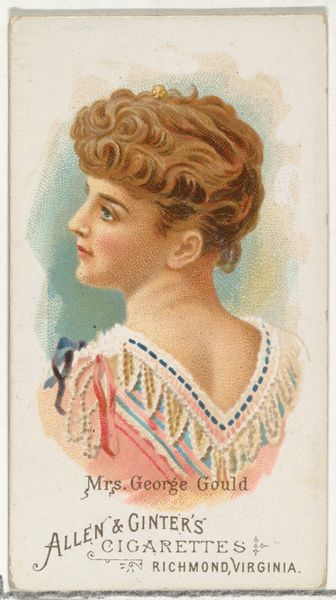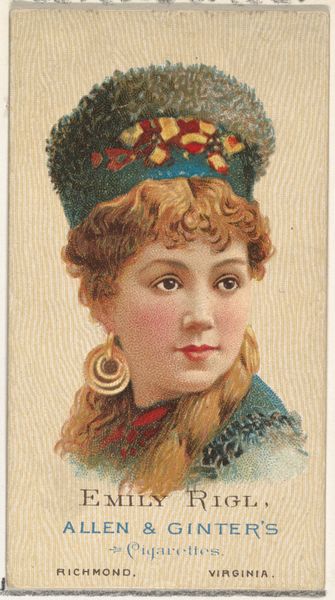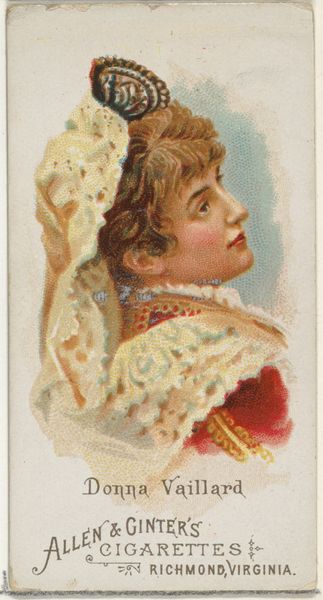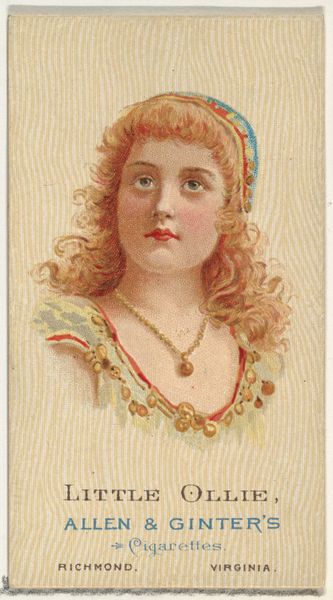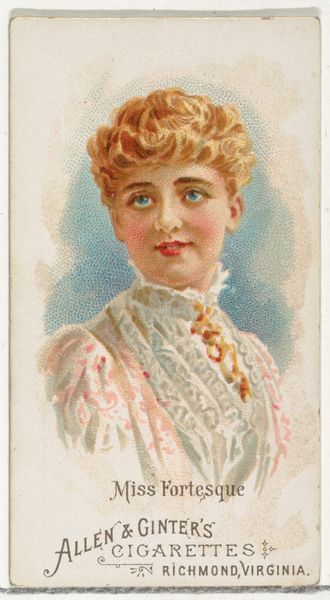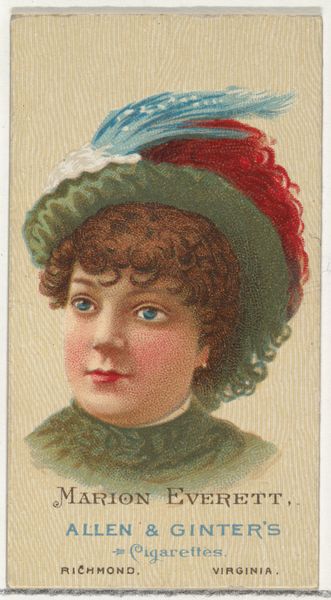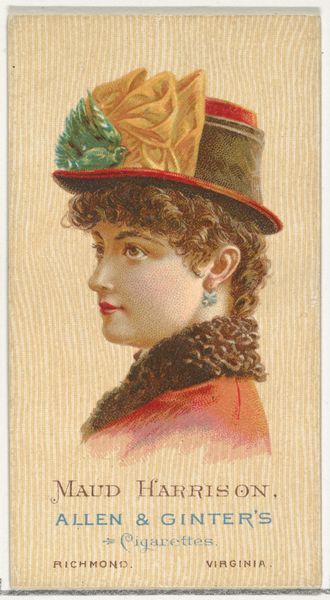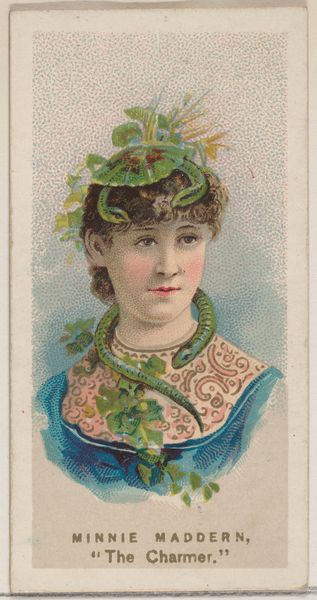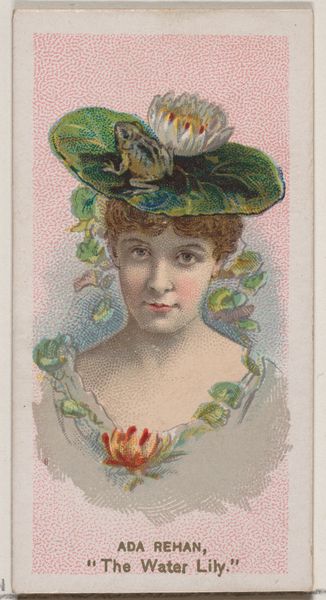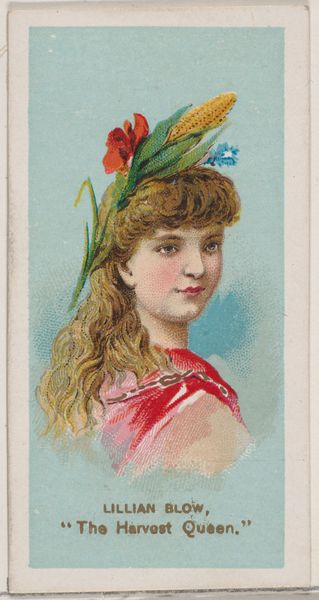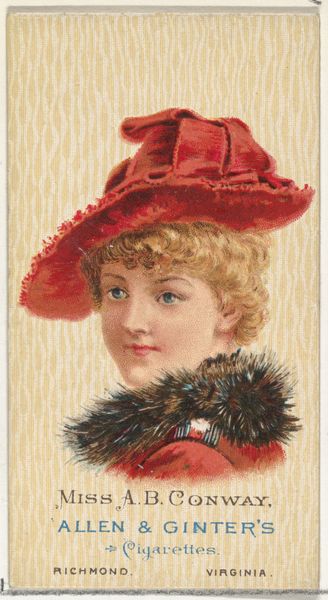
Eliza Weathersby, from World's Beauties, Series 2 (N27) for Allen & Ginter Cigarettes 1888
0:00
0:00
drawing, graphic-art, coloured-pencil, print
#
portrait
#
drawing
#
graphic-art
#
coloured-pencil
# print
#
figuration
#
coloured pencil
#
coffee painting
Dimensions: Sheet: 2 3/4 x 1 1/2 in. (7 x 3.8 cm)
Copyright: Public Domain
Curator: Here we have "Eliza Weathersby," a chromolithograph trade card from Allen & Ginter Cigarettes, dated 1888. Editor: My first impression is the artificiality. She's so obviously presented as an idealized image. The soft palette seems designed to flatter, and her tilt of the head seems… rehearsed. Curator: The process behind these trade cards is quite fascinating. These weren't fine art prints, but rather promotional items included in cigarette packs. We have to think about the laborers producing these images on a mass scale, using industrial printing techniques, and also about the consumers who collected and traded them. The imagery was often intended to associate the brand with ideas of sophistication. Editor: Indeed. Look closely at her elaborate hat and lace collar; these details signify wealth and status. This image of Weathersby taps into archetypes of feminine beauty that were valued in the late 19th century: an innocent gaze, delicate features, carefully coiffed hair. Consider, too, the context: Cigarettes, newly popular and marketed toward men, included these 'beauties' to encourage collecting. There's a seductive allure, suggesting exoticism, power, and idealized beauty. Curator: Absolutely. We have Allen & Ginter, based in Richmond, Virginia, producing and distributing images tied up with these ideas of luxury to sell their products, connecting ideas of womanhood with an addictive commodity that caused severe long-term medical issues for the consumer, largely men. Editor: There’s a performative aspect. It reminds me that images are never neutral. They shape desires, reinforce social roles, and create powerful connections between products and aspirations. Curator: It's quite remarkable how this simple card can reveal so much about the social, economic, and artistic forces at play during that time. The choice of medium itself—mass-produced lithography—tells a story. Editor: It leaves me pondering how even these small, seemingly ephemeral objects contribute to a visual culture with long-lasting symbolic echoes. Curator: It really encourages me to reflect on the labor, production, and marketing involved in image distribution, not only in the 1880s but still to this day.
Comments
No comments
Be the first to comment and join the conversation on the ultimate creative platform.
